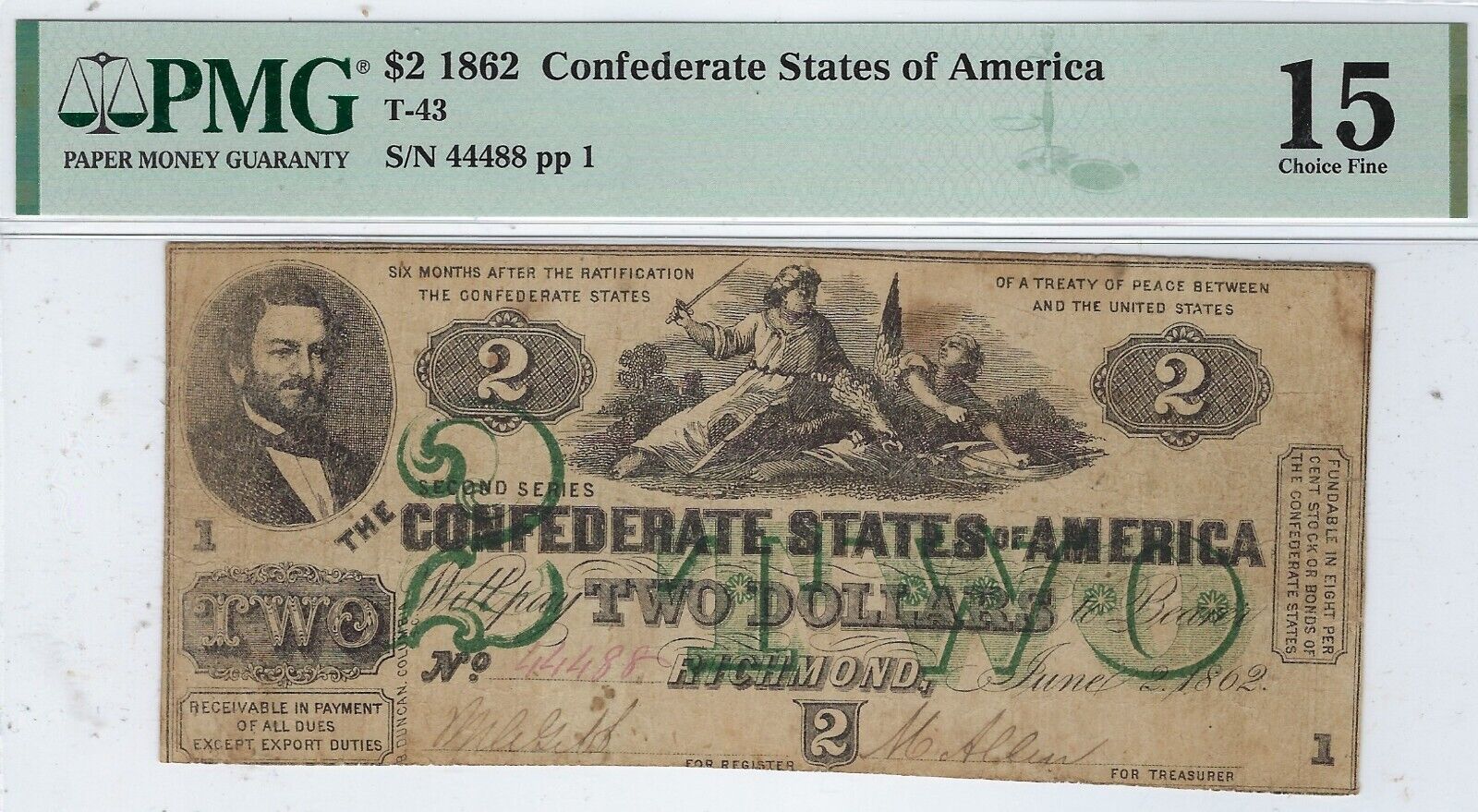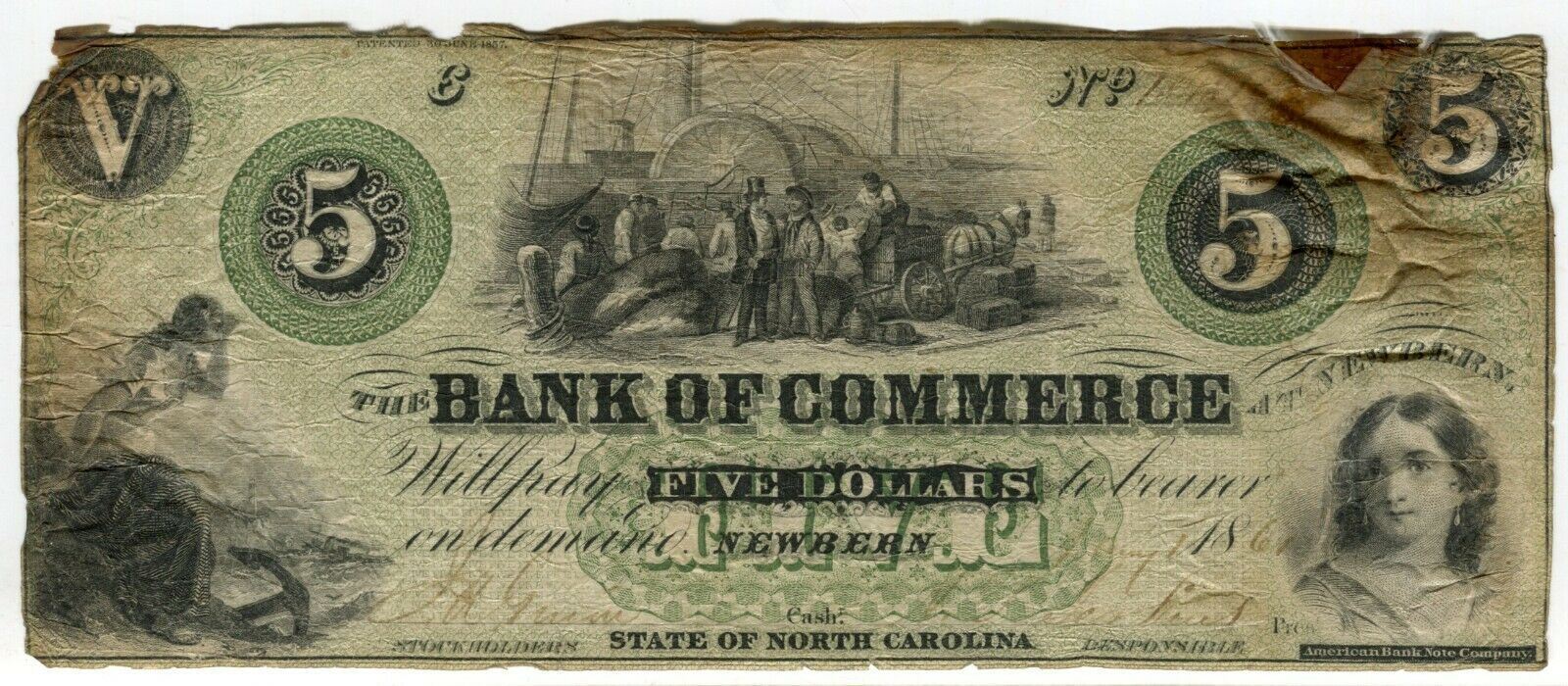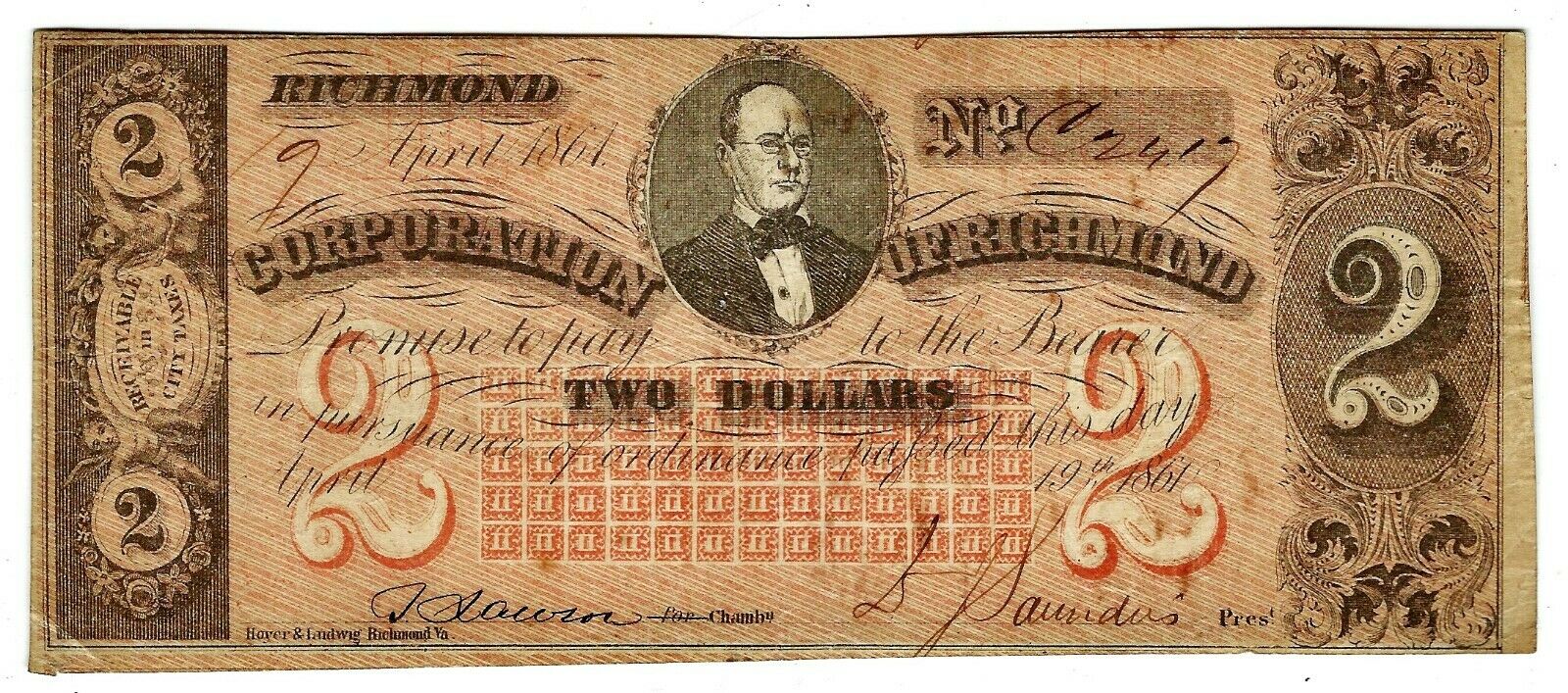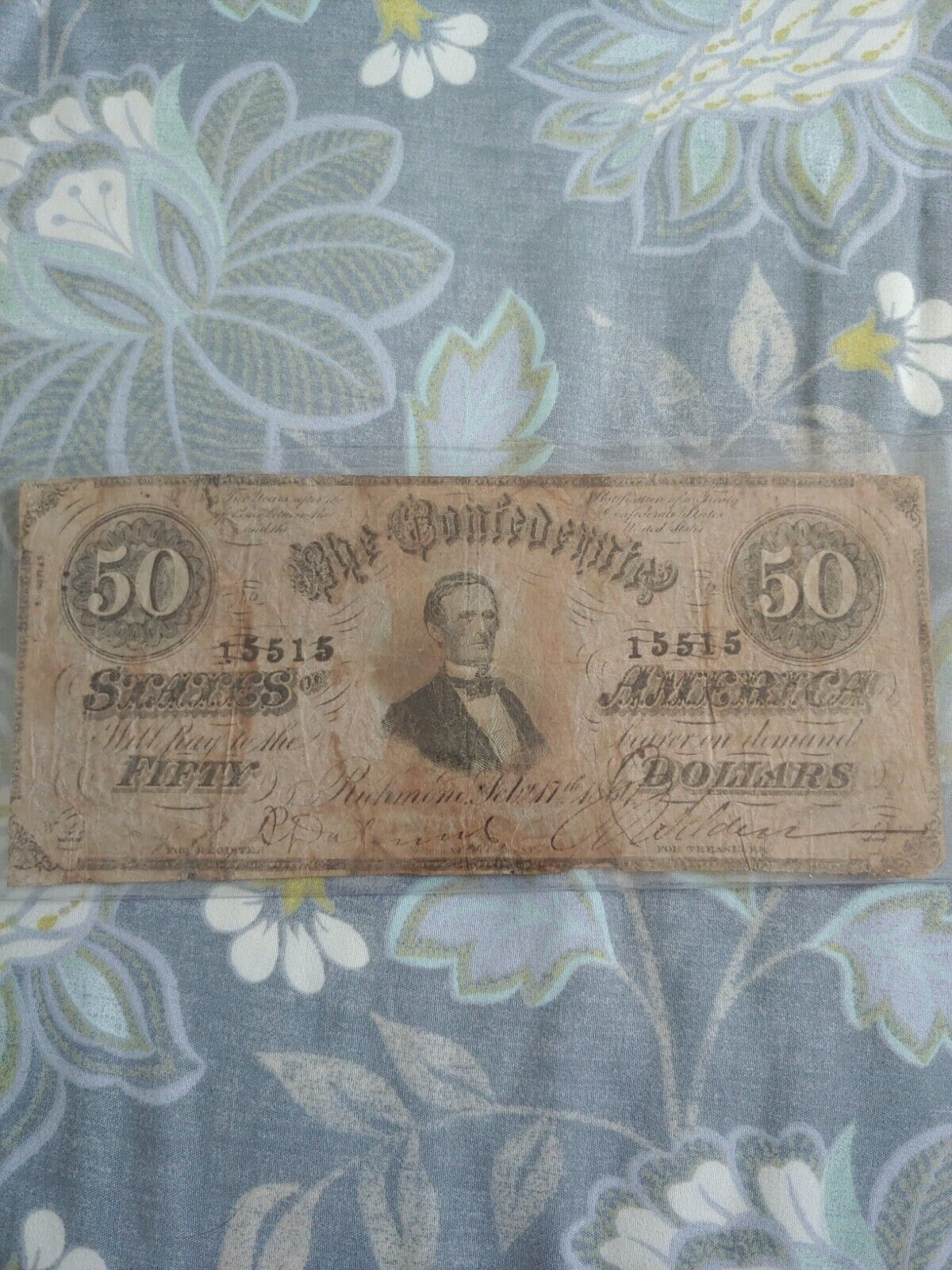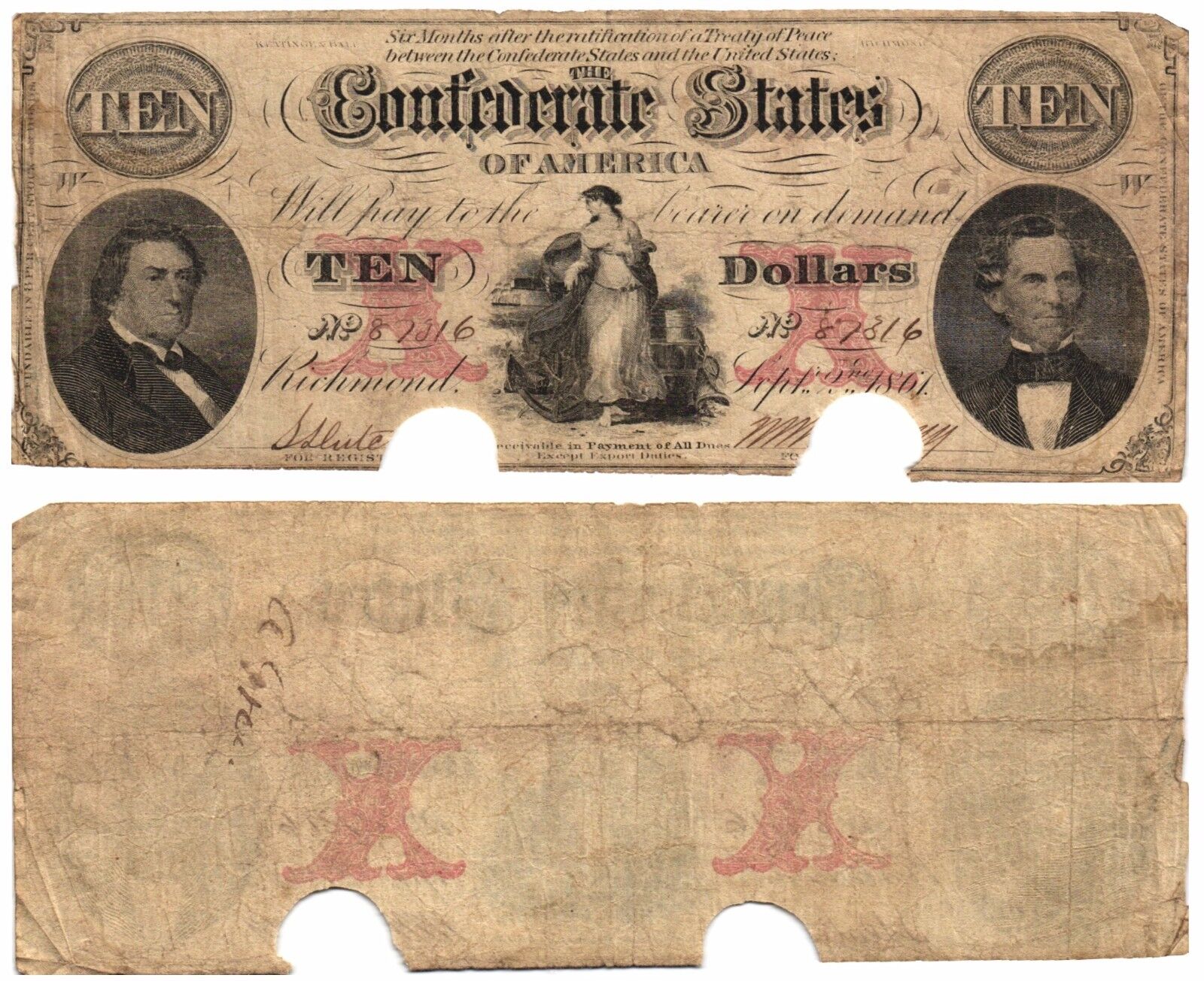-40%
T-43 PF-1 1862 Confederate Paper Money - PMG Choice Fine 15 - nice color!
$ 137.28
- Description
- Size Guide
Description
T-43 PF-1. 1862 .00 CSA Currency.Judah P. Benjamin to the left. South striking down the Union in the center. Green 2 TWO. First Series.
Serial number 44488. Plen 1. Cool serial number!
PMG Choice Fine 15. Minor stains, typical in this grade range. Nice color for the grade. Faces up like a VF or better.
Genuine.
This note is the same base design as T-42. The center of the note presents an allegorical design representing the South striking down the North. This design presented the North as an eagle because the South believed it to be the aggressor. The upper left corner sports a vignette of Judah P. Benjamin, a noted Jewish lawyer and statesman. He was Secretary of War, and later Secretary of State for the Confederacy. The primary difference between this type, and T-42, is the addition of a green “2 Two” underprint that Duncan had his men add. Since the Confederate government was unwilling to pay extra for this feature, Duncan soon dropped it. Some considered this a variety of T-42, but I retain it as a separate type due to its long history as such. This note was “Receivable in payment for all dues except export dues and fundable in Confederate States stock bearing 8% interest six months after the ratification of a treaty of peace between the Confederate States and the United States.”
This type comes on lower quality paper. Many of the notes are found aged a bit, or spotty and stained. Many have natural, or circulation induced body holes. All were heavily circulated, and this type is typically VG or so with numerous body holes.
There is one unusual plate number (plen) error 1-10 (T-43 PF-2), which is one of the great rarities of Confederate currency.
A note about 3rd party grading. PCGS and PMG do a good job putting a floor on quality within a grade range and have become proficient in detecting repairs (though occasionally they miss something, or see something that is not there, as we all can).
Notes housed in Net or Apparent holders have a wide range of quality from very nice (in rare cases may be nearly choice) to dogs with major problems, so each needs to be evaluated on their own.
However, PMG and PCGS focus on technical grading due to circulation and damage and do not have a mechanism for evaluating condition or eye appeal - whether a note is average, better than average, choice or gem for the grade based on its color, trim and margins. The exception to this are slabbed notes of New or Uncirculated grades to some degree. This is important as Very Fine, Extremely Fine or AU notes can have a wide range of values depending on these factors not reflected in the slab grade. A fully framed Confederate or obsolete note is worth considerably to a lot more than one that is trimmed into the margin for the same grade. Likewise, color is important. These factors can affect the value of a note by 50%, 2-1 or even 3-1, e.g., an AU 58 (PPQ or not) T-20 1861 CSA note trimmed into the margin is worth between 0 and 0. The same grade, AU 58 (PPQ or not), with a full frame and good color/inking is worth something like 0 to 00 depending on eye appeal. I will continue to use the terms plus for above average, choice and gem to mean varying degrees of superiority of condition and eye appeal of a note within a grade as documented in my book which is based on what collectors seek out and pay premiums for.
In coins, we’ve seen the third party graders add things like full bell lines, full head, full bands which reflected the market. I’d expect either the grading services or another party to do the same for paper money. If you are just buying the number on the holder for the best price, you may well be buying low end notes for the grade!
Pierre Fricke. Immediate Past President of the Society of Paper Money Collectors; Professional Numismatists Guild (PNG); Professional Currency Dealers Association (PCDA); ANA, EAC, etc...
BuyVintageMoney.
Author of the standard guide book to Confederate money - Collecting Confederate Money Field Edition 2014.
Free shipping and insurance.
eBay has announced that it will start to collect sales tax on behalf of sellers for items shipped to customers in Alabama (Jul 1), Connecticut (Apr 1), Iowa (Feb 1), Minnesota (Jan 1), New Jersey (May 1), Oklahoma (Jul 1), Pennsylvania (Jul 1), and Washington (Jan 1). Additional states are being added like Idaho and more than 20 others. This is the new internet tax out of the US Supreme Court Wayfair decision. Buyers are responsible for paying this sales tax.
See eBay information for list of states eBay charges this tax payable by buyers to eBay as part of eBay invoices -- https://www.ebay.com/help/selling/fees-credits-invoices/taxes-import-charges?id=4121#section4
